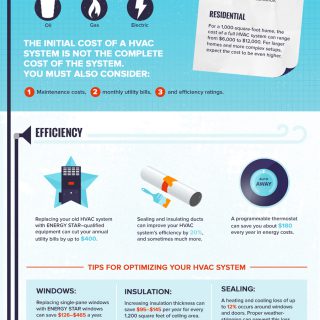The Future Of Home Home Heating - How Heatpump Modern Technology Is Progressing
The Future Of Home Home Heating - How Heatpump Modern Technology Is Progressing
Blog Article
Material Writer-Dawson Kaae
Heatpump will certainly be a crucial modern technology for decarbonising heating. In a scenario consistent with federal governments' announced power and climate commitments, their international capability increases by 2030, while their share in home heating rises to one-quarter.
They function best in well-insulated homes and count on electrical power, which can be provided from a sustainable power grid. Technological innovations are making them extra efficient, smarter and more affordable.
Gas Cells
Heat pumps utilize a compressor, cooling agent, coils and followers to move the air and warmth in homes and devices. They can be powered by solar energy or electricity from the grid. They have been acquiring appeal due to their low cost, quiet operation and the ability to generate electricity throughout peak power demand.
Some business, like IdaTech and BG MicroGen, are servicing gas cells for home heating. These microgenerators can replace a gas boiler and produce a few of a house's electrical requirements with a link to the electrical energy grid for the rest.
But there are factors to be doubtful of using hydrogen for home heating, Rosenow says. https://kevsbest.com/best-hvac-services-in-san-jose/ would be costly and inefficient contrasted to various other modern technologies, and it would certainly contribute to carbon exhausts.
Smart and Connected Technologies
Smart home modern technology enables property owners to connect and regulate their devices remotely with the use of mobile phone applications. As an example, wise thermostats can discover your home heating preferences and instantly adjust to maximize power usage. Smart lights systems can be controlled with voice commands and immediately shut off lights when you leave the room, decreasing power waste. And smart plugs can check and manage your electrical use, permitting you to recognize and limit energy-hungry home appliances.
The tech-savvy household depicted in Carina's interview is a great image of how occupants reconfigure area heating practices in the light of brand-new smart home modern technologies. They rely on the devices' automatic features to perform everyday modifications and regard them as a hassle-free ways of conducting their home heating techniques. As mitsubishi air conditioner logo , they see no factor to adjust their techniques even more in order to allow versatility in their home energy demand, and interventions aiming at doing so might deal with resistance from these houses.
Power
Since heating up homes make up 13% of US discharges, a button to cleaner options could make a huge difference. Yet the innovation faces obstacles: It's expensive and requires comprehensive home restorations. And it's not constantly suitable with renewable energy resources, such as solar and wind.
Until recently, electric heatpump were as well pricey to take on gas versions in most markets. But new developments in style and materials are making them much more budget-friendly. And much better cold environment performance is enabling them to function well even in subzero temperature levels.
The next step in decarbonising heating might be using warm networks, which draw warmth from a main resource, such as a neighboring river or sea inlet, and distribute it to a network of homes or buildings. That would certainly minimize carbon exhausts and allow homes to make the most of renewable resource, such as eco-friendly electricity from a grid supplied by renewables. This alternative would certainly be much less pricey than switching over to hydrogen, a nonrenewable fuel source that calls for new framework and would only minimize carbon dioxide discharges by 5 percent if paired with improved home insulation.
Renewable resource
As electrical energy prices go down, we're starting to see the very same trend in home heating that has actually driven electric vehicles into the mainstream-- yet at an also faster pace. The solid environment instance for electrifying homes has been pushed further by new research study.
Renewables account for a considerable share of modern warm usage, yet have actually been given limited plan interest worldwide compared to various other end-use industries-- and even much less attention than electricity has. Partly, this reflects a mix of customer inertia, split incentives and, in numerous countries, aids for nonrenewable fuel sources.
New technologies might make the change simpler. As an example, heatpump can be made more energy effective by changing old R-22 refrigerants with new ones that do not have the high GWPs of their predecessors. Some experts also visualize area systems that attract heat from a nearby river or sea inlet, like a Norwegian arm. The warm water can then be utilized for heating and cooling in a community.